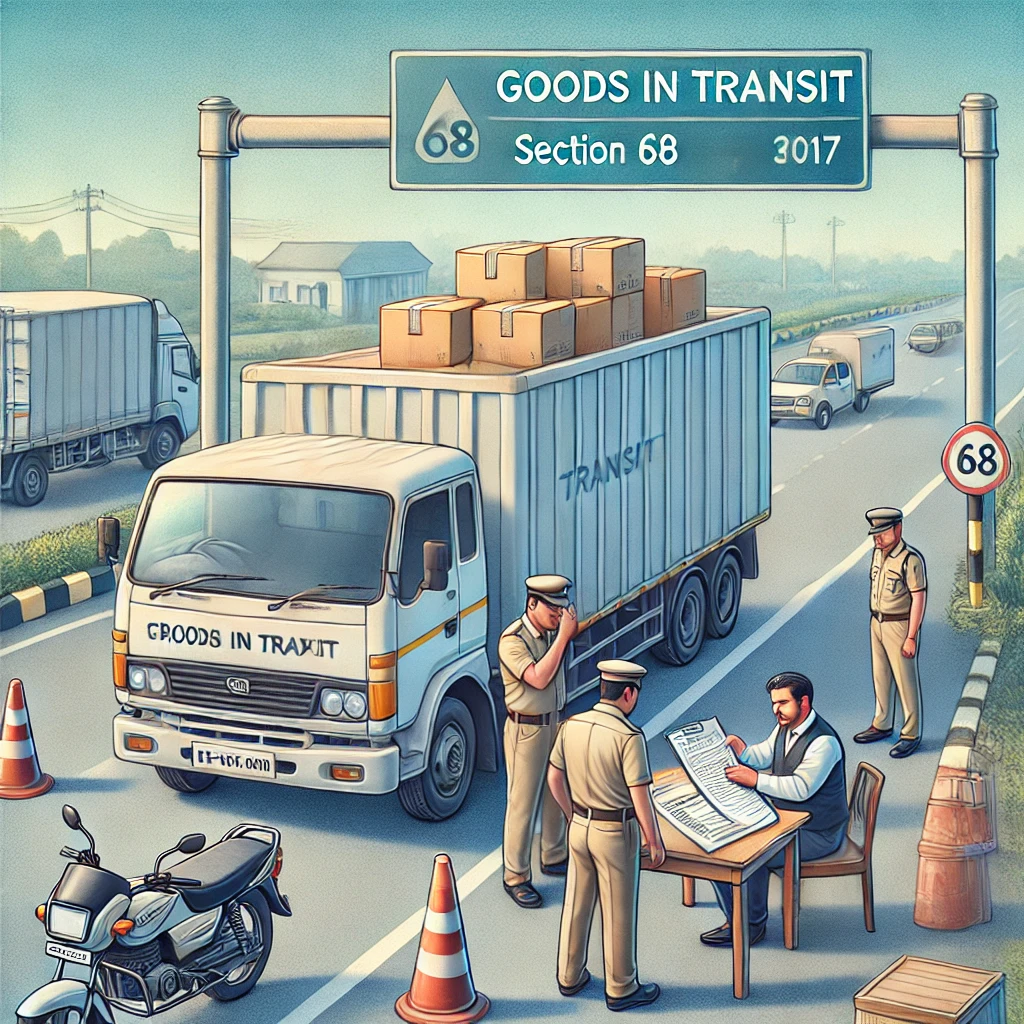The Central Goods and Services Tax (CGST) Act, 2017 introduced several measures to ensure seamless movement of goods while curbing tax evasion. Among these, Section 68 plays a crucial role by governing the inspection of goods in transit. This section mandates proper documentation, authorizes verification during transportation, and enforces penalties for non-compliance. Let’s dive into the key aspects of this essential GST provision. GST Registration.
1. Documents Required During Transit
For goods valued at ₹50,000 or more, carriers are required to present the following documentation:
- E-way Bill: A digital document necessary for interstate movement of goods.
- Invoice: This includes details of the goods, the seller, and the buyer.
- Device or Physical Copy: Transporters may be required to carry the above in either digital or physical form.
For intra-state movements, specific thresholds may vary based on state regulations. Proper documentation ensures a hassle-free transportation process and compliance with GST laws. GST Filing.
2. Authority to Inspect and Verify Goods
Authorized GST officers have the power to intercept and inspect vehicles carrying goods in transit. They may:
- Request documents: Verify the e-way bill and invoice.
- Inspect goods: Ensure the goods match the accompanying documentation.
- Verify authenticity: Confirm the validity of both the documents and the transported goods.
Transporters are legally required to cooperate during the inspection process to avoid detention or penalties.

3. Penalties for Non-Compliance
Non-compliance with GST documentation during transit can lead to:
- Detention or Seizure: Goods and conveyances can be detained.
- Penalties: Section 129 prescribes financial penalties for violations.
- Confiscation: Under Section 130, goods and vehicles may be confiscated, and further fines may apply.
These strict provisions aim to prevent tax evasion and ensure transparency in trade.
4. Digital Interface for Transparency
To minimize delays and ensure accountability, GST processes are now largely digitized. Key aspects include:
- Online Inspection Records: Officers can log inspections on the GST portal.
- Timely Resolutions: If an inspection takes more than 30 minutes, the transporter can record the delay online, holding the inspecting officer accountable.
This digital interface promotes smoother goods movement and avoids unnecessary disruptions.
5. Definition of Inspection
The CGST Act distinguishes between inspection and more severe actions like search or seizure. Inspection allows:
- Verification at premises: Officers can access warehouses, transport hubs, or vehicles to ensure compliance.
- Checks on documentation: Officers verify invoices, e-way bills, and other records to detect possible irregularities.
Only officers authorized by a Joint Commissioner or higher authority may conduct inspections when fraud or non-compliance is suspected.
6. Meaning of ‘Goods’ Under GST
According to Section 2(52) of the CGST Act, “goods” refers to:
- Movable property (excluding money and securities).
- Actionable claims.
- Crops and grass intended to be severed from land.
However, the definition excludes immovable property and intangible assets like patents and copyrights.
7. Access to Business Premises
Under Section 71, officers may access business premises to verify compliance. This includes inspecting warehouses, transport hubs, and storage facilities for records and goods related to GST. Business owners must ensure that all documentation is in order to avoid penalties during such inspections.
8. Required Documentation for Goods Movement
The movement of goods must be accompanied by:
- E-way Bill: Contains shipment details like origin, destination, and value.
- Invoice: Outlines product details and tax components.
Failure to produce these documents during transit can lead to penalties under Sections 129 and 130.
Conclusion: Stay Compliant to Avoid Penalties
Section 68 of the CGST Act is a cornerstone in regulating goods movement across India. It ensures compliance by mandating documentation, enabling inspections, and penalizing non-compliance. Businesses and transporters must remain vigilant in adhering to these rules to avoid delays, fines, and disruptions.
By ensuring compliance, Section 68 promotes transparency, reduces tax evasion, and facilitates smooth movement of goods across the country. Transporters should stay updated with the latest GST regulations to prevent legal issues and keep their operations running efficiently.
FAQs on Section 68 of the CGST Act
- What is the e-way bill threshold for interstate goods movement?
- The threshold is ₹50,000, but states may set different limits for intra-state movement.
- Can officers inspect goods without prior notice?
- Yes, authorized officers can inspect goods in transit without notice if non-compliance is suspected.
- What happens if my goods are detained?
- You may need to pay a penalty or furnish a bond to release the goods. If penalties are not resolved, the goods and vehicle may be confiscated.
This guide emphasizes the importance of compliance with Section 68 of the CGST Act to avoid disruptions and penalties during goods transportation.

